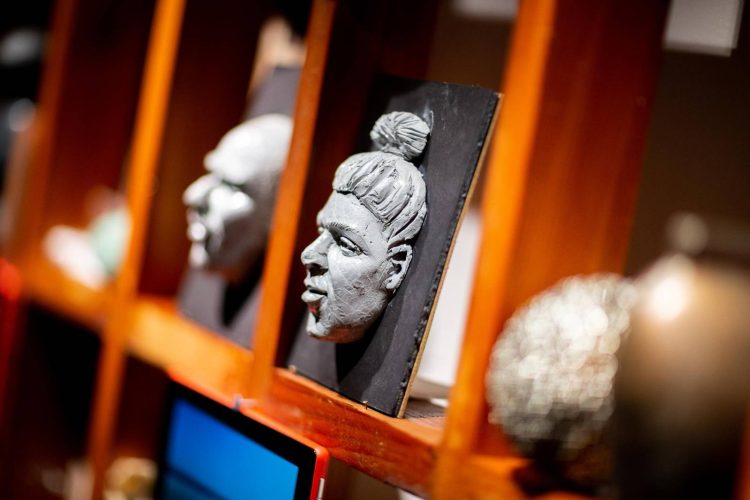Roma Pavilion at the 23rd International Art Exhibition Triennale Milano

Emília Rigová: altaRIG, 2020, multimedia installation, detail
Over the course of the 99-year-long history of the Milan Triennale, the exhibition commissioned by ERIAC for the 23rd International Art Exhibition is the first occasion when a presence of Roma art is ensured. We applaud the President of Triennale Milano Stefano Boeri for his bold vision, continuous support, and opening the doors of one of the most prestigious art events in the world to Roma artists. The exhibition in the Roma Pavilion, commissioned by ERIAC, was realised with support from Italy-based organisation, Movimento Kethane, led by ERIAC’s long-time member and supporter, Dijana Pavlovic.
The Roma Pavilion features the work, oltáRIG by Slovak artist, Emília Rigová (b. 1980). The original installation was conceived as a central piece of the 2020 retrospective exhibition, Kale Bala, Parno Muj (Black Hair, White Mouth), held at the Schemnitz Gallery in Banská Štiavnica, Slovakia. Due to pandemic measures, the exhibition was produced as a virtual event, but here in Milan, the work can be seen in person for the first time.
At the centre is the altar honouring the oeuvre, career, and life of Bári Raklóri (‘bári’=big, ‘raklóri’=daughter of non-Roma parents), the artist’s alter ego which has become a leitmotif of her visual work over the past decade. Referring to Rigová’s Roma origin and family history, the persona of Bári Raklóri allows the artist to evade the collective Roma identity as a minoritarian artist and facilitates acts of self-definition and freedom. Her alias functions as a catalyst to narrate and embrace her Roma origins, connecting her individual experience to the stories shared by members of the Milanese Roma community, invited to contribute to the project by mounting their own altars, and displaying personal memories and stories, thus illuminating the intangibility of their polyphonic community. The altar formula provides a sumptuous yet probing vehicle to evoke the complexity of such concepts as identity, authenticity, ethnicity, representation, hybridity, race, class, migration, globalisation, and power. Building on Roma cosmology and forms of knowledge, and delving into the richness of their spiritual and material traditions, Rigová aptly uses the stories evoked by the altars to cultivate a self-determined imaginarium of Europe’s largest ethnic minority. In elaborating hidden Roma stories rooted in affective familial rhizomes, the artist reveals their entanglement with overarching historical, national narratives. Through her collaboration with the local community, the exhibition unfolds as a site-specific Wunderkammer, the tangible materialisation of diversity of Roma identities and experiences, despite the homogenizing majoritarian narrative.
Emília Rigová: And the One Doesn’t Stir Without the Other
at the 23rd Triennale Milano International Exhibition – Unknown Unknowns: An Introduction to Mysteries.
Curated by Timea Junghaus
Commissioned by the European Roma Institute for Arts and Culture (ERIAC)
Contributors: Dijana Pavlovic, Noell Maggini, Toni Deragna, Miguel Fiorello Lebbiati, Mykhailo Shpakov
Partner: Movimento Kethane
Opening Event: 14 July at 3 pm
Public Dates: 15 July – 11 December 2022
More: e-flux ; https://eriac.org/milantriennale/

[…] Previous Blog Entry […]
[…] Next Blog Post […]
[…] Next Blog Entry […]